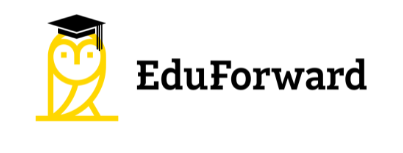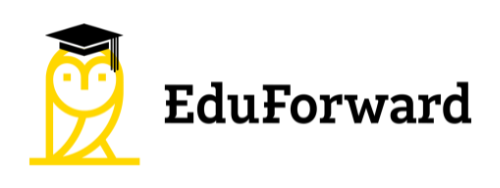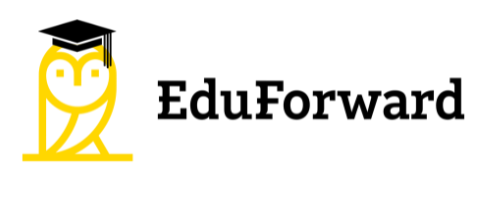Use Code EduForwardCares for 10% off your first purchase Now Hiring! Check out our careers / Donate and get involved
Case Study: Analysis of Teacher and Student Trends
Research Analysis of Teacher and Student Trends
By Jerome Harris III
Conducted at the University of California, Los Angeles, and throughout the United States in 2020
Research conducted on behalf of Coachable Academic LLC (AKA Coachable or Coachable AI) & UCLA
GOALS:
The goal of this research is to discover what matters most to learners and teachers, specifically and in a general sense, and to utilize that information to refine the functions of a learning app, its overall offering, and applicability, in order to designate valued channels, features, and motivations in modern education.
Through 70 interviews, educational app capabilities were gauged, based on functions and usability. With the goal to create an effective, efficient, and easy to use app that lets users learn and teach what they want, when they want, how they want, and where they want in mind, a course for research was set.
By focusing on the optimization of certain aspects of learning and teaching like increasing learner speed, reducing learning curves, gauging learner responses, and measuring motivators, I developed AI learning algorithms, VR and app-based tools and systems through my educational company, Coachable AI, the practical conduit for the research being conducted.
With a strategy to continuously maximize user experience through learning optimization and environmental awareness, proprietary systems were built and set for measurement against status quo learning methodology.
The initial premise for Coachable, going into this research, was that what makes Coachable most beneficial to users and society is an offering to improve personal and environmental access and conditions for learning everywhere. With the goal to offer free, impactful courses to society, an app offering that would benefit users and society as a whole was set into further development.
In order to do this, the primary goal of this research was determined as finding what drives learners and learning, while the secondary goal was determining how to best utilize that information within a learning app to optimize overall learning processes. After initial analysis of the learning space, potential for new technologies and a new approach to education in general was apparent.
AI optimization and machine learning have several benefits for education that were not being utilized in almost any of the other prevalent online eLearning platforms, if any, at the time (2019/2020). In order to maximize Coachable’s offering, the goal of this research was to integrate new technology with personalized, learner- based methodology, in order to develop the ultimate learning systems that would allow users to teach or learn anything within reason, with the help of revolutionary learning tools and an interconnected learning infrastructure.
EXPECTATIONS:
Before beginning the interview process, I designated the ideal target segment of interviewees for this research. Because our app is primarily a two way model, catering to both teachers and learners (academic and professional), I chose a focus that would best fit our overall offering to both learners and teachers, but with a refined enough approach to establish specific functions and tools from extrapolations gathered.
To choose an ideal demographic, I analyzed the current learning and eLearning sector, as well as the socioeconomic, national, and global conditions surrounding. I saw the value of remote learning and tech, due to the increasing trend toward the technologization of society. With a changing world, occupational environment, and a growing network of socioeconomic, everyday functionality, I saw that a valuable educational offering could benefit everyone willing to participate in it. Not only that, but with automation creating a need for retooling of the workforce, I saw space for the evaporating human-based sectors of society like arts and music to be resolidified in a new system that values the creative and personal contribution to learning.
The key target demographics were narrowed down to those that would provide the most value to the development of an eLearning app. I chose 6 categories of users and narrowed that grouping to three categories, most effective for Coachable’s marketing and business positioning strategy, aimed at the younger demographic of school age learners and middle demographic of young professionals and teachers, and further an area that best represented our goal to create engaging, social learning. Because Coachable is a learning company that gives back to society, an economic, social, psychological, and practical focus was also taken into account when choosing the target research demographic.
Coachable’s beachhead market was initially colleges, teachers, and students, which was decided because of the demographic’s fit within the offering of an innovative learning app. To distill this segment further and expand it to a more general offering, a general area of knowledge that applied to the beachhead market and an overall market, that met mutual applicability of targeted and general learning, was chosen. Given these conditions, music was the educational genre and research demographic ultimately selected as the focus for this research, with music students and teachers selected as those to be interviewed. Music education is widely applicable to other types of education and is relevant to both society and the humanities, in terms of socioeconomic and cultural impact. The focus on this demographic would prove applicable to the most relevant areas of focus for the research at hand.
METHODOLOGY:
The target research group was chosen and needed to be further distilled, amongst music teachers and learners, by traits, characteristics, motivations, and educational belief system rankings. 20 music teachers and 50 music students were selected from various sources to avoid confirmation bias.
Craigslist was utilized to interview music teachers and students from various geographical regions in the U.S., including Los Angeles, San Diego, San Antonio, New York, San Francisco, and Austin. Interviews were conducted with established contacts and randomly chosen students and teachers from respected institutions like UCLA, the Musician’s Institute, and various local Los Angeles music institutions, in order to provide a diverse and qualified sample-set for the research.
Questions were devised for the research, based on the goals established, and expanded upon, based on individual interview developments. The interview foci were directed to user experience and impression of music education modes and standards, as well as how music education could be improved or added to through an app. Each interviewee was questioned on what was most valuable, beneficial, and detrimental to the learning process, for both music teachers and students.
With more information distilled in the findings, the second half of the cohort was asked to rank the most commonly asked about applications, mentioned by the first half of the cohort, in order of importance to them. These ranked functions were described as: Having the Best Learning Tools, Finding The Right Teacher for You, and Scheduling Flexibility. Participants were asked to rank these three functions in order of perceived importance. Through weighted means analysis, the perceived importance of these three traits was measured and recorded.
Abstractly, most questions were left open-ended and led to insights on music education through conversational inquiry about the music industry or different learning applications in the field.
FINDINGS:
Using a weighted analysis, it was determined that participants in the study generally valued finding the right teachers most of the three traits polled (103.5), followed by having the right learning tools (68), and finally scheduling flexibility (65.5).
By providing students and teachers with the tools, methodology, and variability of learning they need to be engaged in and excited by the learning process, an integrated platform that caters to each actor is desired in the learning space. Learners and teachers express a greater belief that they will be successful, when education fits their vision of personal needs and wants. What students and teachers do with the fundamental tools we provide is truly up to the individual, and while some generalities apply, many specificities call for a customized learning experience that focuses on the quality of teacher and education above all else.
After studying the many variables that go into teaching and learning, I gained a greater overall understanding of the principles of balance that it takes to manifest teaching and learning dualities, public and private spheres of education and technology, and the importance of personal interaction in learning spaces, in an effective way.
ANALYSIS:
There were many variables that contributed to the impact of learning tools for students and teachers in an eLearning app: reminders, rewards, goal and method progress, efficient video and communication tools and learning systems, and others. Attention to personalities of student and teacher, and overall style and compatibility of learners and instructors, however, were the key indicators of overall satisfaction in learning and goal fulfillment for the participants.
Understanding how to cater to student and teacher individual learning styles helps both student and teacher grow in the understanding of themselves and the learning process. In order to do this, matching needs, wants, and concerns, with personalized learning design, while customizing the learning experience to the individual, creates an environment best suited for learning and personal success.
Recordings and integrated cross-platform tools can improve efficiencies in an agile and iterative platform to help progress the overall learning process. Understanding dynamic relationships can improve unified methods of collaboration. User profiles and advanced applicability within an app can offer users improved learning cohesion. Practice plans and logs can be helpful in advancing the organization and communication of teachers and students as they work together. Well-rounded creative resources can be helpful in meeting agile and expansive goals.
CONCLUSION:
After interviewing the cohort of students and teachers, the initial assumptions of certain learning values, like base needs were generally predicted correctly, while many variable aspects drew attention to the need for personalization. These findings proved to be valuable in learning system design, seeing systems build as a breathing mechanism. Through the understanding of learning tools and pedagogy in general, we can better help the individual and the community learn together through personalized and collective learning.
Antiquated learning models are still being employed by most present-day learning systems and fail to respond adequately to the needs of each learner and teacher. By focusing on a classroom of thirty, the need of one is often overlooked. By focusing on superficial outcomes alone, the process of holistic developmental education is neglected. By tailoring the learning experience to the individual, Coachable optimizes learning and teaching methods to achieve complete ends. Coachable was tailored to ensure knowledge and information is transparent, vastly accounted for, reliable, and easily accessible.
You might also like
Expert Insights
Book a Service Today
We will get back to you as soon as possible
Please try again later
Quick & Reliable
We are available 7 days a week
Location
San Antonio, TexasAustin, Texas
Email
Info@EduForward.com
Phone
512-937-9745
All Rights Reserved | EduForward


